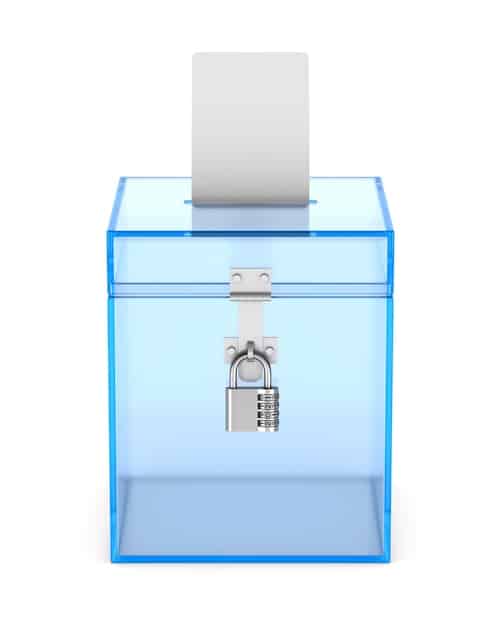Ensuring US Election Integrity in 2026: Security Measures & Challenges

US Election Security Measures: Protecting the Integrity of the Democratic Process in 2026 entails implementing robust safeguards against cyber threats, voter fraud, and disinformation campaigns to maintain public trust and ensure accurate election outcomes.
The integrity of the democratic process in the United States hinges on the security of its elections. As we look ahead to 2026, understanding and reinforcing US Election Security Measures: Protecting the Integrity of the Democratic Process in 2026 is paramount to maintaining public trust and ensuring fair and accurate election outcomes.
Understanding election security challenges in the US
Ensuring election security is a multifaceted challenge. It requires a comprehensive approach that addresses various threats, from cyberattacks to disinformation campaigns. The complexity of the US election system, with its decentralized structure, adds another layer of difficulty.
Cybersecurity Threats to Elections
With increasing reliance on technology, elections are vulnerable to cyberattacks. These can range from hacking into voter registration databases to manipulating electronic voting machines.
The Spread of Disinformation
Disinformation poses a significant threat to election integrity. False or misleading information can influence voters and erode trust in the democratic process.
- Combating disinformation requires a multi-pronged approach involving media literacy education.
- Social media platforms are under pressure to identify and remove false content.
- Fact-checking organizations play a crucial role in debunking false claims.
Election security also includes physical security, such as protecting polling places and ballot boxes. This involves measures like security personnel and surveillance systems.

Key security measures for the 2026 elections
To safeguard the 2026 elections, several key security measures must be implemented. These include technology upgrades, enhanced monitoring, and improved voter education.
Upgrading Voting Technology
Outdated voting machines are a major security risk. Upgrading to modern, secure systems is essential for ensuring the integrity of the vote.
Enhancing Voter Registration Security
Secure voter registration databases are critical for preventing fraud. This involves implementing measures like multi-factor authentication and regular audits.
Additionally, conducting risk assessments on election infrastructure can help identify vulnerabilities and prioritize security measures.
Federal and state roles in election security
Election security is a shared responsibility between the federal government and state governments. Each plays a vital role in ensuring the integrity of the process.
Federal Government Responsibilities
The federal government provides funding, resources, and expertise to support state election security efforts. Agencies like the Department of Homeland Security (DHS) and the Election Assistance Commission (EAC) play crucial roles.
State Government Responsibilities
States have primary responsibility for administering elections. This includes implementing security measures, training election officials, and conducting post-election audits.
- States also have the power to enact laws and regulations to enhance election security.
- Many states have established cybersecurity task forces.
- Collaboration between state and local election officials is vital.
Communication and coordination between federal and state governments is essential for effectively addressing election security challenges. Regular meetings and information sharing help ensure a unified approach.
The role of technology in securing elections
Technology plays a dual role in election security. While it can introduce vulnerabilities, it also offers powerful tools for enhancing security.

Blockchain Technology for Voting
Blockchain technology has the potential to revolutionize election security. Its decentralized, tamper-proof nature makes it ideal for securing voter records and election results.
Artificial Intelligence and Machine Learning
AI and machine learning can be used to detect and prevent voter fraud, identify disinformation campaigns, and improve cybersecurity.
However, technology is not a silver bullet. It must be implemented carefully, and security measures must be regularly updated to address emerging threats. Human oversight and expertise are essential.
Addressing voter suppression and access to voting
Election security is not just about preventing fraud and cyberattacks. It also includes ensuring that all eligible citizens have access to the ballot box. Voter suppression efforts can undermine the integrity of the democratic process.
Combating Voter ID Laws
Voter ID laws can disproportionately affect minority and low-income voters. Efforts to expand access to acceptable forms of identification are crucial.
Expanding Early Voting and Vote-by-Mail
Early voting and vote-by-mail can make it easier for people to participate in elections.
- These options can reduce long lines at polling places.
- They can also accommodate voters with disabilities or other challenges.
- Secure implementation of these methods is essential to maintaining integrity.
Protecting the right to vote is an integral part of election security. Efforts to suppress voter turnout must be challenged to uphold the principles of democracy.
Ensuring transparency and public trust
Transparency is essential for building public trust in elections. When voters believe that the process is fair and accurate, they are more likely to accept the outcomes.
Conducting Post-Election Audits
Post-election audits provide a way to verify the accuracy of election results. These audits can involve manual recounts of paper ballots or statistical analysis of electronic voting records.
Promoting Voter Education
Voter education is critical for ensuring that people understand how elections work and how to exercise their right to vote. This can involve providing information on voter registration requirements, polling place locations, and voting procedures.
Open communication and public engagement are essential for fostering trust in elections. Election officials should be transparent about security measures and respond to voter concerns.
| Key Element | Brief Description |
|---|---|
| 🛡️ Cybersecurity | Protecting election systems from cyberattacks. |
| 📣 Disinformation Control | Combating spread of false election info. |
| 🗳️ Voter Access | Ensuring every eligible citizen can vote. |
| 📊 Transparency | Open audits of election results. |
FAQ
▼
Election security is vital to maintaining the integrity of the democratic process, ensuring that every vote is accurately counted and reflects the will of the people.
▼
Main threats include cyberattacks on voter databases and voting machines, the spread of disinformation influencing voters, and physical threats disrupting polling places.
▼
Technology like blockchain can secure voter records, while AI helps detect fraud and disinformation, but requires careful implementation and constant security updates.
▼
The federal government supports state efforts with funding, resources, and expertise through agencies like DHS and EAC enhancing cybersecurity across jurisdictions.
▼
Expanding early voting and vote-by-mail, along with challenging restrictive voter ID laws, ensures broader and more equitable participation in elections, strengthening democracy.
Conclusion
As the US looks forward to the 2026 elections, prioritizing and strengthening election security measures is essential. By addressing cybersecurity threats, combating disinformation, ensuring voter access, and promoting transparency, the nation can safeguard the integrity of its democratic process and maintain public trust in the outcomes.





